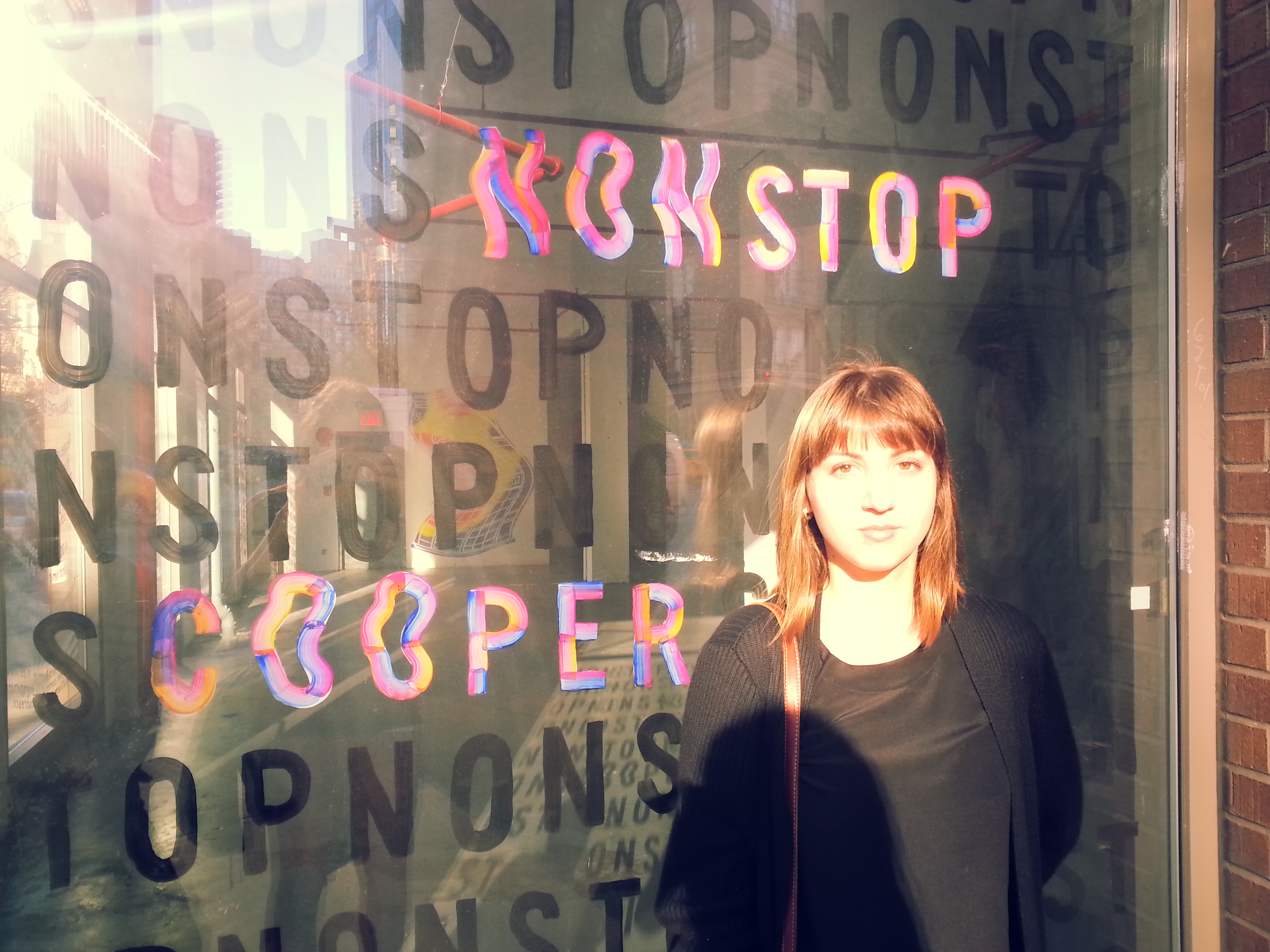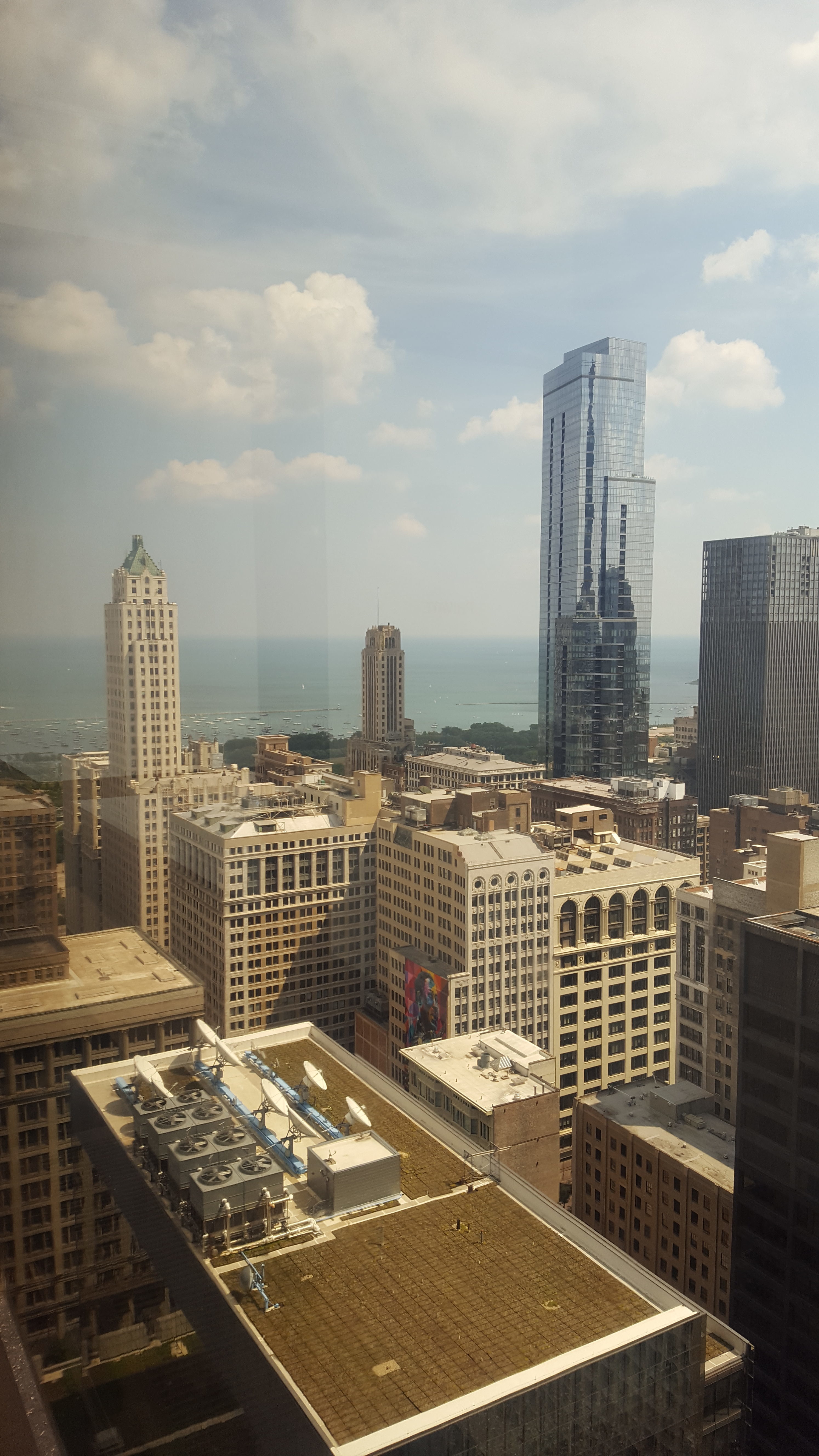Thinking About Social Transformation in NYC: Greta Treistman ’17 at North Star Fund
Sep 14, 2017I came to New York City for my third co-op because I and a few other Antioch students were invited by a group of student activists from Cooper Union who are engaged in an ongoing battle to reinstate free tuition as the founding principle of their school. Their interest in Antioch’s history and feeling of affinity between the two schools connected with my studies of the governance and political economy of educational institutions. I wanted to experience the climate of activism and movement building among students and radicals in New York City, but I first I needed a job.
Antioch’s co-op department connected me to an internship at North Star Fund which has not only allowed me to survive financially in one of America’s most out-of-control rent nightmare cities, but to engage with New York City’s grassroots community organizers.
North Star Fund is a small fundraising organization that gives grants to community organizers working on social justice issues in New York City. Founded in 1979 by a group of young people with financial resources, North Star has strived since its inception to redistribute wealth in a more democratic way. They have distinguished themselves by prioritizing activist organizations that are led by people directly impacted by injustice. Among non-profit organizations, they stand out for their commitment to including local activists in their grantmaking process. The unique model used by North Star places the power to decide which organizations are awarded grants in the hands of a rotating committee made up of former North Star grantees and local activists. Those who best understand the work of organizers and who are in the fairest position to evaluate advocacy groups are charged with distributing North Star’s budget.
I was attracted to North Star based on this philosophy and their thoughtful and critical analysis of grantmaking, philanthropy, and the relationship between funders and grantees. I felt disillusioned with the non-profit world, its inefficiencies and redundancies, and lack of democracy, transparency, and accountability. Working with North Star has given me a more nuanced view of the intricacies of grantmaking and a better perspective from which to critique it.
I also felt passionate about the issues that they fund and the community organizers that they work with. Some examples of current campaigns by North Star grantees include anti-gentrification and housing equity, police accountability, the rights of undocumented workers and detainees, and racial justice. I saw North Star as a great opportunity to learn about these issues and connect with the groups doing advocacy work around them. I was also personally interested in learning more about the strategies and tactics of community organizers and the structure of their organizations. After explaining my interest to my supervisor, I was given space and encouraged to become familiar with the grantees and their issue areas. Staying engaged and up to date with local news and campaigns made my work at North Star much more rewarding.
My job included the grant cycle process of reading proposals, coordinating and attending site visits, and deliberating over how much money to give each group (the final decision is made by the Community Funding Committee, not by North Star staff, but staff participate and observe to give background and for institutional memory).
The organization recognizes the importance of advocacy, testimony, and empowerment of marginalized groups. They also recognize that there are grassroots groups with potential that lack the vocabulary and connections to appear attractive and viable to more traditional grantmakers. Sometimes, grants are funding potential that is never fully realized. That is part of the process.
In addition to being an incredible resource for connecting to powerful advocacy organizations, North Star has given me a lot to consider in terms of the world of philanthropy and the different tactics available to those seeking to change the injustices in our social and economic system.
I’ve also been given the space and resources to think about and observe how my academic interests are put into action. My major is a self-design which investigates social transformation through coursework in political economy, history, and culture. Working at North Star, meeting with community organizers doing campaign work, and living with student activists from Cooper Union and former participants in Occupy Wall Street who are connected to radical communities in New York has informed my time in New York and enriched how I think about strategies to transform society.
Criminal Defense, Civil Rights – The Police Bureaucracy; Race in Chicago: Treistman ’17 at Law Offices of Phillip Brigham in Chicago, Illinois
Sep 14, 2016For my fourth and final co-op, I sought an experience in the world of law. In my prior work at North Star Fund, I had come across the important role played by legal clinics and civil rights lawyers in justice movements and activism. I wanted to get a better sense of the extent to which United States law can be used as a tool to pursue justice for the systemically oppressed. I have also taken an interest in police brutality and misconduct in relation to racial injustice, topics which have dominated the headlines throughout my time in college thanks to the Black Lives Matter movement. I am working as a legal aide for Law Office of Phillip Brigham, a practice dealing in criminal defense and family law. My employer is located in the city of Chicago, which is nationally infamous for its high rates of gun violence, corrupt police force, and pronounced racial segregation and inequality.
Phillip Brigham has a small, independent practice in an office suite that he shares with four other attorneys who also work independently. Sometimes their cases overlap, or one of them will take on work that is a conflict of interest for another. They all work in different areas of law. In Phillip’s practice, we take on cases related to family law: child custody, divorce, domestic violence, international child abduction; criminal defense: assault, attempted murder; and civil rights law. On a day-to-day basis, handling all of these different cases (currently the practice has 30 open cases, plus pending cases and recently settled cases) involves drafting legal documents, filing documents with the court, going to hearings and status and trials in the courthouse, communicating with the opposing party, and doing legal research. Most of our cases are in Cook County, so when we go to court we go to the Cook County Courthouse, also known as the Richard J. Daley Center. Domestic Relations, where most of our hearings are, is on the top floor of the courthouse, floor 30.
On most days I take the red line downtown to the loop and come into the office around 9:30 am. I act as the receptionist for the office, answering the phone and greeting people who come in. I spend my time drafting court forms, motions, and pleadings, filing those documents and mailing copies to related parties, and doing research for cases. Sometimes this means going to the Daley Center Law Library, where law librarians will help you find the right books of legal code to answer your question. Things are organized in a complex way that is different from a regular library.
Currently, we are in the process of reviewing discovery for one of our most high-profile cases, on which we are working in partnership with several other law firms. The case is a class action suit against the city of Chicago and the Chicago Police Department involving Homan Square, a police interrogation center that has been compared to CIA “black sites” due to allegations of torture, illegal detention, and various other civil rights infringements. The Chicago Police Department has a long history of hiring torturers and covering up corruption (see Jon Burge). Cases related to Homan Square have gained international attention due to detailed coverage in The Guardian, which has been augmented through actions by local protest groups working around the Movement for Black Lives. The current class action suit has been brought as a result of a case brought a few years ago by our client, whose story was also covered in The Guardian. Homan Square is located in South Chicago, an area with one of the country’s highest rates of gun violence, an area that is predominately African-American, and that is the site of frequent police misconduct, especially related to narcotics (the “war on drugs” which turned out to be a war on Black people).
There is no court date set for this case yet, as it is still deep in the discovery process. Discovery means that both sides can request related documents and require that the opposing side turn over evidence and answer a limited number of questions (“interrogatories”). As our opposing party is CPD and it is a large class action suit, this means that there is a lot of discovery: thousands and thousands of pages of documents. Part of my job is to organize and go through these files. For the most part, these are complaint reports filed against Chicago police officers and arrest reports related to our clients. Each case generates mountains of paperwork, and a lot of it is useless to us. One of the reasons it’s so difficult to prosecute the police (among many, many reasons) is that there is such a quantity of paperwork, and a limited number of employees who care enough or are paid enough to be thorough. It is very easy for things to slip through the cracks in the discovery process. The Chicago Tribune has reported on the failures of discovery in the large bureaucracy of city government. Reforming the discovery process was also one of the recommendations of a recent report on alleged misconduct by CPD. The report pointed no fingers and claimed that there was no intentional misconduct. It is easy to put off laying blame when failure and errors can be attributed to the lumbering, inefficient bureaucracy. Even if activists are successful in getting the Department of Justice involved in a case, the DOJ must follow federal code, which means they are looking for conspiracy or intentional racism and misconduct. Many incidents involving racist policing are not necessarily premeditated and planned, they are simply the accepted norm. Those cases are impossible to prosecute because there aren’t laws and precedents set for punishment. We need new laws and policies that are able to acknowledge the problem in the first place.
Having followed the Movement for Black Lives since the events in Ferguson, Missouri unfolded in the summer of 2014, this co-op is providing me with complexified insight into the opposing sides of the activist movement. In the past two years I’ve read the news articles, followed the social media activists, participated in the movement around the John Crawford case in Beavercreek, Ohio (near Antioch’s campus), and worked for a grassroots organizing funder which supported Black Lives Matter movements in Manhattan. These experiences prompted me to deepen my studies of the history of race and racialized oppression in the Americas. Seeing the legal side, the police side, the government side, the bureaucratic side, up close and personal has been uniquely informative. In fighting police brutality and systemic racism in our bureaucracies, what are our tools? What are the pressure points? Even if you can’t ultimately take apart the master’s house with the master’s tools, it’s still a good idea to know what those tools are and know how to use them — and know how they might be used against you.



